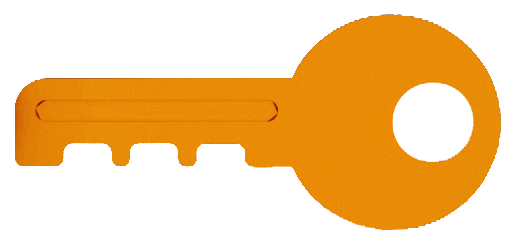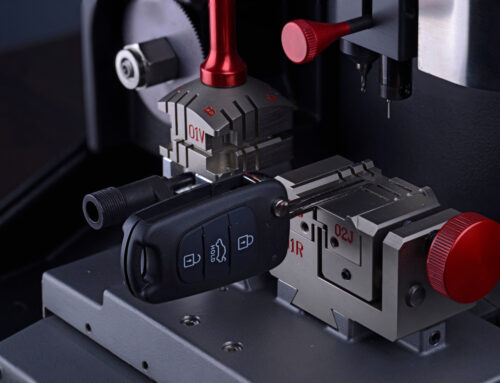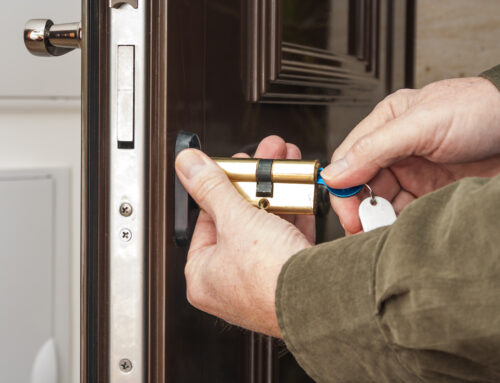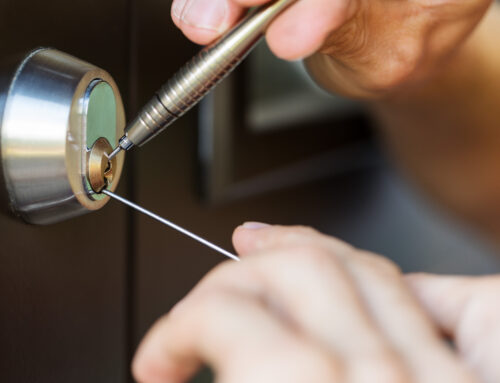One of the interesting things about safe work is that you run into genuine antiques from time to time. Some are still used daily and just need to be serviced or have a combination changed occasionally.
Parts Aren’t Readily Available for Old Safes.
Others need minor repairs to put them back in working condition. This is somewhat dependent on availability of parts, usually salvaged from junkers. Yes, we’re talking about safes that can be 100-150 years old. Try to picture putting a Model T back in running condition. The parts aren’t on the shelf at your local auto parts store. It’s even worse with safes that old.
Some Safes Have Been Unused for Years.
Then there are the safes that have been locked up for an unknown number of years. It may have been 40-50 years since the safe has seen any use. That type of safe often is a rusting hulk in an old shed, barn, garage, basement or abandoned building.
Locked Up Safes Bring Out the Treasure Hunter in People.
I’ve had my share of opening safes like this over the years, and the customer will always talk about putting it back into service. But the gleam in their eye says there is a bit of a treasure hunter inside.
That curiosity born of the treasure hunter inside is enough to justify a phone call to the local “safe cracker,” in this case, me. About 50% of callers with a locked-up antique safe end up scheduling a job. The 50% that turn down the quote just can’t make the connection that it costs big money to open some old safes.
A Recent Quote to Open a Locked Up Hall’s Safe
A recent example of this was a call from a senior citizen who received a safe for free. This is not unusual. A locked up safe is much like a boat anchor that is only in the way, if not being used for its original purpose.
In this case, I made a service call to see the safe before giving an estimate. After filling in the prospective customer a little on the Hall’s Safe and Lock safe sitting under his machine shed, I quoted the gentleman what I considered to be a gentle price. He was a little disappointed when I told him how little room was actually inside and that a second money chest was also probably installed inside.
As I drove away, I thought for sure that I wouldn’t get the opening. The safe was very rusty, and the paint it did have was peeling. The big surprise was that the dial turned freely, all wheels were picking up, and the handle appeared to be free and working. I dismissed the safe from my mind and continued on to the rest of my day.
The Job Is Arranged.
About two weeks later, the gentleman called up and wanted it open. I think that the treasure hunter inside him finally got the best of him. It really was a reasonable price I had quoted. I thought the safe could be put in working condition and told him so.
Immediately is often the best time to open a safe in this situation. I was on scene in about 40 minutes with all tools ready.
The Work is Performed.
The plan was to drill one hole less than ¼” in diameter at a 30⁰ angle from a predetermined point on the door face. The hole was drilled with a 3/16” bit, and I was close to where I needed to be, but not exact. I expanded the hole to ¼” and was able to view the inside of the safe lock. About 10 minutes after that, the safe handle turned to the unlock position.
The Safe is Opened.
As I often do in the case of these old safes, I let the gentleman have the “honor” of swinging open the safe door. I took a load of tools to the truck while he approached the door and gave it a yank. The next thing I heard was, “Look at all these termites.” I hurried back and saw a safe just absolutely full of small black ants (no, not termites!) everywhere. It was one of the most awful messes I’ve seen, with eggs and ants everywhere!
“Treasure” is Found.
Inside, besides 2 small cubbyholes and a shelf, was another safe, just as I had predicted. Fortunately it was unlocked. Since the point of the opening was to determine the combination, I set about to do that while the owner searched his newly opened treasure box for valuables. Believe me, both of us were surprised when he pulled out a roll of Susan B. Anthony dollars. Not a great amount of “treasure,” but certainly better than nothing.
The Job is Completed.
I did what I needed to do to put a combination on the outer door and left the welding of the door (repairing the drill hole) to the man and his son. (This gave him a little lower cost than if I had done the repair.) As I said goodbye, thinking that everyone was happy, the gentleman said one last thing that made my day. “You have a good attitude for this work. You don’t let little problems bother you.” High praise from someone who was 80+ years old.
The point of this article was to let you see, blow by blow, what happens on an old safe opening like this.
Call Us If You Want Your Locked Up Safe Opened.
If you have a locked up safe, or know someone who does, give us a call at (618)466-9347 to see what it would cost to open it and whether it would be possible to put it into working condition. You would be surprised how reasonable it can be, especially in comparison to the cost of a new safe. Depending on the type of safe, age, and condition, some safes can be manipulated open without any drilling, while others (such as the one above) need to be drilled to avoid spending an inordinate amount of time on the opening.
And yes, if you have that bit of treasure hunter in you, that’s ok, too. But just know that very few old safes contain anything except an odd paper clip. Call us now at (618)466-9347 for your free estimate. And yes, the safe has to be yours, and you have to prove it!






